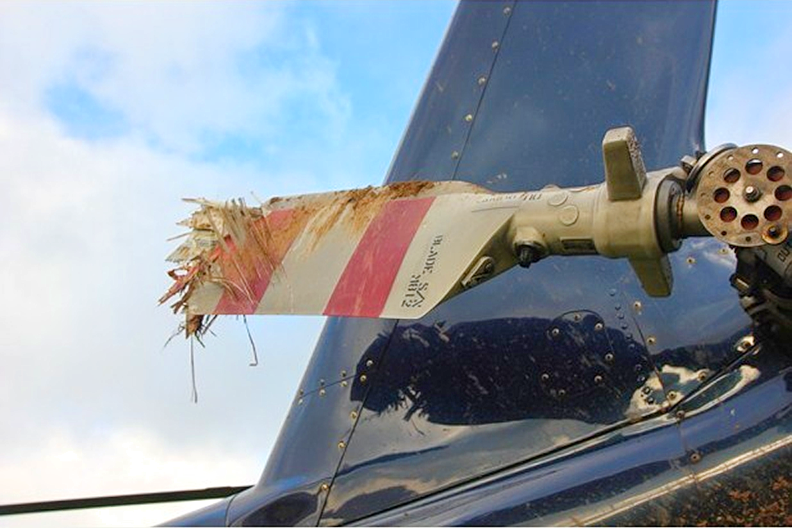Does anyone recall Dave Richards' incident prior to Christmas last?

AW109S G-IOOZ as seen in a field East of Withypool in Somerset on 9th December 2013 (Photos by Martin Bennett)


An AAIB Special Bulletin on the matter has now been published:

AW109S G-IOOZ as seen in a field East of Withypool in Somerset on 9th December 2013 (Photos by Martin Bennett)
An AAIB Special Bulletin on the matter has now been published:
The helicopter had departed from St Mawes, Cornwall, intending to fly to a private landing ground on Exmoor near Withypool, Somerset - this journey would take about 30 minutes. The pilot was aware that another helicopter was scheduled to land at the same site somewhat later and had arranged for landing lights and a vehicle with a radio to be present. He contacted the vehicle driver before departing St Mawes and was told that everything was set up and the weather was clear.
As he approached the site at 2,500 ft, the pilot contacted the operator on the ground and was told that “it had started to cloud over but the moon was still visible and he could be heard coming”. Flying over the site at 2,500 ft QNH with the radio altimeter showing over 1,000 ft agl, the pilot could just about make out the lights below him but noted that, to the north and east of the landing site, it appeared to be totally clear. He lowered the landing gear, carried out the landing checks and tested the landing lights, setting the moveable landing light to the straight ahead position. He took up a southerly heading towards the site and descended through a thin layer of cloud over the village of Exford, commencing his approach to the landing site which he saw about a mile distant and at a height of about 500 ft; the lights, and in particular the flashing lights on the operator’s vehicle, were clearly visible to the pilot at this point.
The pilot had been largely navigating using the ground lights but, at about 500 m from the site, he switched on the landing lights and was immediately dazzled by the glare from the mist which had formed at low level. He states that he was momentarily blinded and disoriented before he switched the light off again. Although only travelling at about 40 kt, he descended too rapidly and failed to see a line of trees, approximately 30 ft high, which the helicopter clipped with its tail rotor. It immediately started to yaw and the pilot force-landed in a field some 300 m short of the landing site. In doing so, the helicopter span through about 180º and the landing gear sank into the soft, wet ground, detaching the nosewheel. The pilot was uninjured. Although the main rotor had not struck the ground, the tail rotor blades and landing gear were badly damaged.
As he approached the site at 2,500 ft, the pilot contacted the operator on the ground and was told that “it had started to cloud over but the moon was still visible and he could be heard coming”. Flying over the site at 2,500 ft QNH with the radio altimeter showing over 1,000 ft agl, the pilot could just about make out the lights below him but noted that, to the north and east of the landing site, it appeared to be totally clear. He lowered the landing gear, carried out the landing checks and tested the landing lights, setting the moveable landing light to the straight ahead position. He took up a southerly heading towards the site and descended through a thin layer of cloud over the village of Exford, commencing his approach to the landing site which he saw about a mile distant and at a height of about 500 ft; the lights, and in particular the flashing lights on the operator’s vehicle, were clearly visible to the pilot at this point.
The pilot had been largely navigating using the ground lights but, at about 500 m from the site, he switched on the landing lights and was immediately dazzled by the glare from the mist which had formed at low level. He states that he was momentarily blinded and disoriented before he switched the light off again. Although only travelling at about 40 kt, he descended too rapidly and failed to see a line of trees, approximately 30 ft high, which the helicopter clipped with its tail rotor. It immediately started to yaw and the pilot force-landed in a field some 300 m short of the landing site. In doing so, the helicopter span through about 180º and the landing gear sank into the soft, wet ground, detaching the nosewheel. The pilot was uninjured. Although the main rotor had not struck the ground, the tail rotor blades and landing gear were badly damaged.
